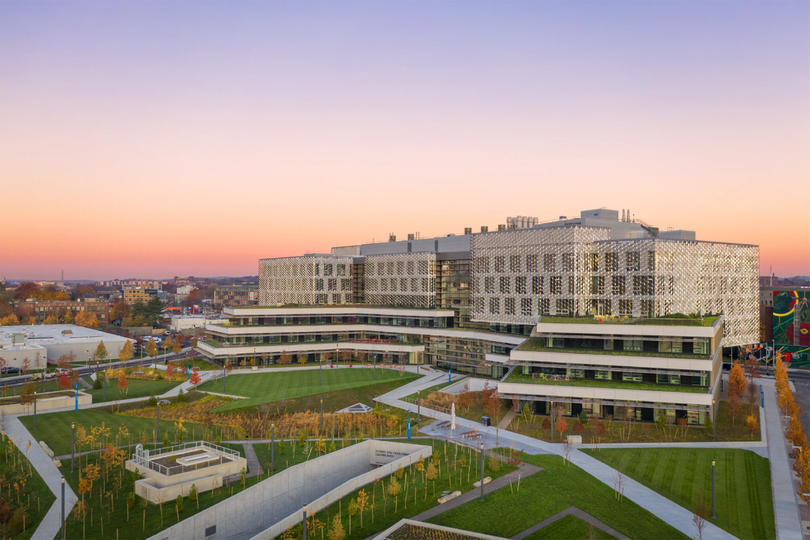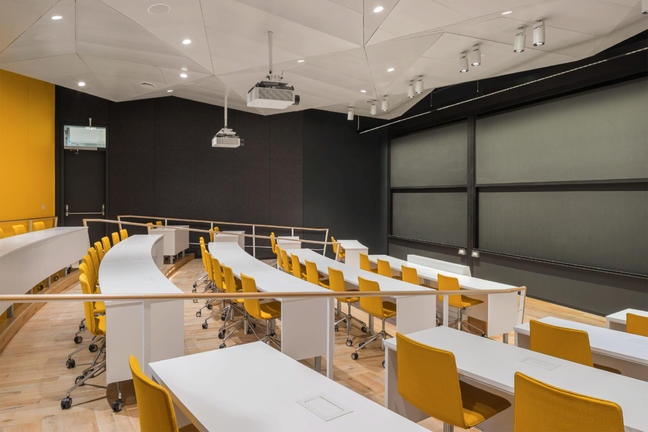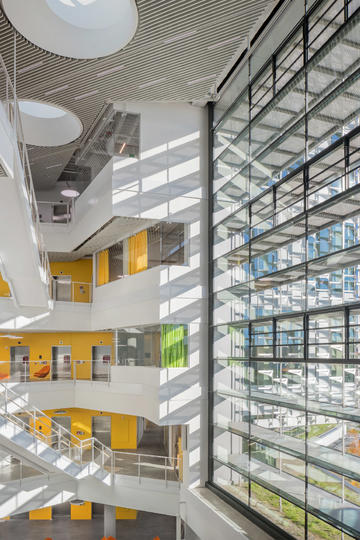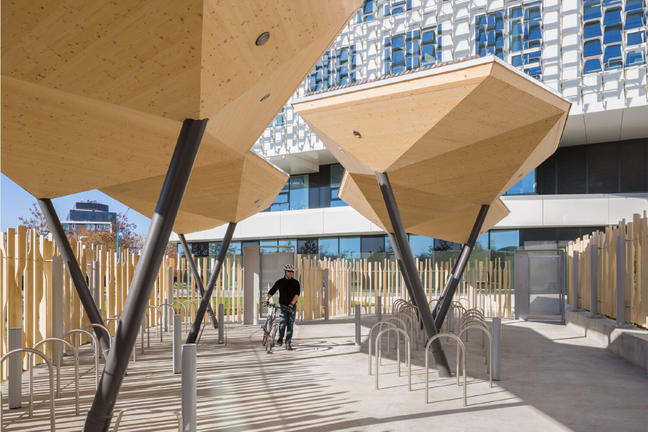Harvard’s new Science and Engineering Complex achieves LEED platinum & Living Building Challenge Petal certification


by Erin Tighe, The Harvard Gazette
Harvard University’s Science and Engineering Complex (SEC) has been certified by two international building certification programs as one of the healthiest, most sustainable, and energy-efficient laboratories in the world.
The eight-story, 544,000-square-foot complex will help Harvard progress toward its Sustainability Plan and achieve its goals to be fossil fuel-neutral by 2026 and fossil fuel-free by 2050.
Home to the Harvard John A. Paulson School of Engineering and Applied Sciences (SEAS), the building is a living laboratory for world-class, interdisciplinary research, learning and innovation. The SEC is set to open its doors to students in the fall of 2021.

The SEC is the largest building and first wet laboratory building to achieve the International Living Future Institute’s Living Building Challenge Petal certification. That certification defines the highest measure of sustainability possible in the built environment based on the best current science, and holds organizations accountable to a very high standard while recognizing that true sustainability is an ongoing journey.
Drawing on research by SEAS and other Harvard faculty and students linking harmful chemicals in building materials to cancer, immune suppression, diabetes, high cholesterol, obesity, thyroid diseases, and more, the University used the design and construction of the SEC to transform the marketplace for healthier building materials.

Harvard used the construction of the SEC to evaluate and test 6,033 building materials, ranging from wire coatings to furniture fabrics to lighting fixtures, and worked with manufacturers and designers to create safer global supply chains. More than 1,200 companies publicly disclosed the ingredients in their products and created labels to help others make healthy decisions. Many manufacturers reformulated their products to remove harmful chemicals. Harvard eventually approved and selected more than 1,700 products that both comply with the Living Building Challenge Red List and meet the rigorous requirements of Harvard’s Healthier Building Academy, a partnership among faculty from SEAS, the Harvard T.H. Chan School of Public Health, Harvard Medical School, and the Harvard Office for Sustainability.
“We have shown that it is possible to minimize or eliminate toxic substances such as per- and polyfluoroalkyl substances, chemical flame retardants, and polyvinyl chloride (PVC) from new construction, making the building healthier for its occupants and creating safer conditions for workers involved in the manufacture of products,” said Elsie Sunderland, Gordon McKay Professor of Environmental Chemistry at SEAS, professor of environmental science and engineering at the Chan Health, and a Harvard Healthier Building Academy adviser. “In the SEC, you will encounter healthier products in the walls, floors, ceilings, lights, furniture, paints, composite wood, wire coatings, pipes, plumbing sealants, countertops, and even lab equipment.”
Designed by Behnisch Architekten, the SEC also features high-performance, novel technologies to ensure energy efficiency. Integrated advanced solar shading strategies, adaptable ventilation methods, a high-performance heat-recovery system, and an energy-saving air-cascade system enhance the SEC’s energy performance while prioritizing well-being. The building also incorporates a storm-water-reuse system, superior insulation techniques, triple-glazed windows, and infrastructure to enable future solar panel installation.

“The SEC is a different kind of experience in the built environment — demonstrating that it is possible to minimize energy use while creating beautiful, healthier spaces that enhance well-being, all in support of world-class research, teaching, and community engagement” said Matt Noblett, a partner at Behnisch Architekten. “Inside the building and out, you will encounter a variety of serene, daylit, well-ventilated open spaces, along with hundreds of trees and plants that improve air quality and bring the natural world inside. The façade is engineered to optimize energy performance and maximize natural light. The patterned enclosure shields the interior from solar heat gain during warmer months while letting sun enter during the winter, reducing cooling and heating loads.”
The SEC is powered by Harvard’s nearby district energy facility (DEF). Designed by Leers Weinzapfel Associates, the DEF was engineered to transition to a fossil-fuel-free future, withstand climate impacts including storm surge flooding, and provide a reliable, resilient source of heating, cooling, and electricity to the buildings on the Allston campus.
The SEC’s Leadership in Energy and Environmental Design (LEED) Platinum certification by the U.S. Green Building Council is a globally recognized symbol of sustainability achievement and leadership, and provides a framework for healthy, efficient, and cost-saving green buildings.
“The work of innovative building projects like Harvard’s SEC is a fundamental driving force in transforming the way our buildings are built, designed, and operated,” said Mahesh Ramanujam, president and CEO of the Green Building Council. “The LEED certification of Harvard’s SEC is a model for sustainability and an example for the community. Buildings that achieve LEED certification are lowering carbon emissions, reducing operating costs, and conserving resources while prioritizing sustainable practices and human health.”
